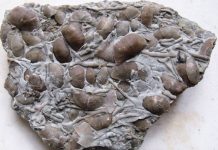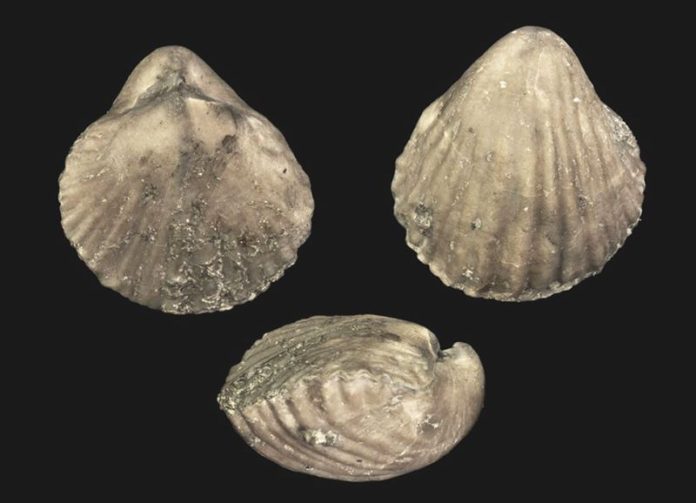
Brachiopods are one of the most common and recognizable fossils found around the world. Brachiopods are exclusively marine, such as fossil fish and crinoids living in the prehistoric saltwater seas. There have been about 30,000 fossil species described to this date. There still are around 385 brachiopod species in the oceans today occupying the deep oceans and oceans near the polar regions.
The word brachiopod comes from the ancient Greek – brachion means “arm” and podos means “foot.”
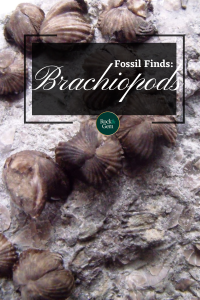
About Brachiopods
Brachiopods are a large group of invertebrate creatures. Brachiopods have a soft body inside a hard calcium carbonate shell. It is because of this shell that we can find so many brachiopod fossils. The hard shell rarely decays away before fossilization. Brachiopods have two shell halves, each half equals one valve. The shell halves are not equal in size or shape. The top shell is convex and called a brachial valve. The bottom valve is concave and called the pedicle valve. The hinge is where the two halves meet at the back or bottom. The front where both halves meet is called a commissure. It is at the commissure where the animal opens to feed. In some species, these valves vary greatly in size and shape.
The outer shell has many fine ridges called costae running from the bottom or back of the shell to the front. In some species, these costae are quite pronounced and add to their beautiful appearance. The sulcus is a valley or depression in the valves.
Some brachiopods are inarticulate and do not possess hinges, but most have a stalk-like pedicle or foot that projects from an opening in the bottom valve. It allows the brachiopod to attach itself to the sandy bottom of the sea. Once attached, the brachiopod opens its valves and feeds by filtering the water for food particles.
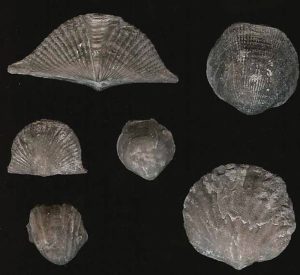
Ancient Brachiopods
Brachiopods are known from the Silurian Period to the Carboniferous Period from around 480 million to 299 million years ago.
Living in the shallow saltwater seas, these creatures were often killed in the aftermath of major storms. Hurricanes would move them into shallow water. Waves would scour the bottom of the shallow lagoons and toss the shells along with coral and other creatures up onto beaches or into the shallows. As the storm hit the land, mud and sand mixed with clay would wash into the sea covering the brachiopods and creating a perfect condition for fossilization down to the minute details in the shell.
At times one may find a brachiopod with what looks like a perfectly round drill hole in the shell. This hole is made by the rasping jaws of a gastropod or snail. Snails would attach themselves to a brachiopod, drill the hole and suck out the soft body of the brachiopod leaving an empty shell.
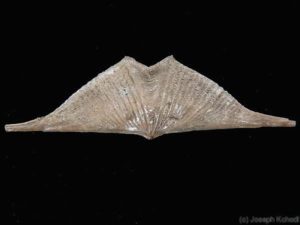
Brachiopod Fossil Hunting
Often bryozoan colonies or other epibionts (organisms that live atop others) formed on top of the shells, making for an interesting fossil find.
In some areas around the world, the brachiopods are preserved as internal molds meaning the outer shell of the brachiopod rotted away and left an impression of the inside of the shell. Many people call these shells “fossil hearts” because of their shape.
Generally, when you find one brachiopod there are many more around because there were no humans to walk the ancient beaches so shells would wash up and pile high. These shell beds can be made of millions of shells or half shells of various species. A gold mine for fossil hunters!
This story about brachiopod fossils previously appeared in Rock & Gem magazine. Click here to subscribe. Story by Joseph J. “PaleoJoe” Kchodl.



